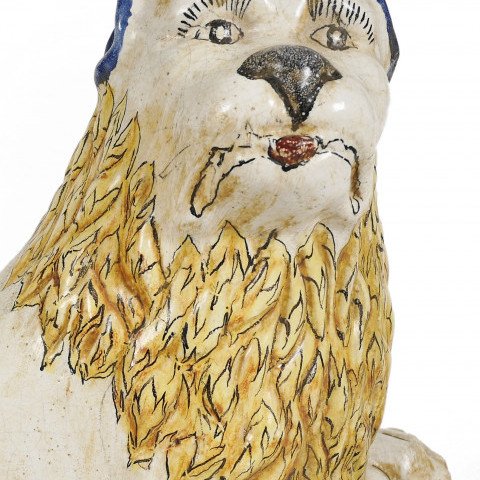Tuilerie Normande Mesnil de Bavent is a French pottery factory.
The first pottery factory here was set up in 1842 by industrialist Maurice Comptet. He bought a bit of production organization to an artisanal craft, enabling mass production of tiles, pots and architectural ornaments. The Tuilerie du Mesnil de Bavent (tuilerie means tile) business flourished and his sons inherited. One stayed in Bavent to make pots, the other developed a factory mainly producing pots, in Caen.
Bavent pottery became so famous a piece of pottery from the factory was included in the design for the Roman House at the 1989 L’Exposition Universelle Paris exhibition. A finial apparently but we can’t spot it, perhaps it was a surface decoration.
By the turn of the century the Tuilerie was owned by M. Aimé Jacquier. M. Jacquier appreciated the uniqueness of the more creative designs that came out of his pottery; sturdy enough to withstand extremes of weather and beautiful enough to be considered art.
His brother Francis was a sculptor who created many wonderful clay animal designs and that are still reproduced here today.
The pottery changed hands a few times until 1931, when another Maurice took over. He combined his engineering knowledge, business sense and encouraged the potter’s creativity. The time between 1931 and the outbreak of WW2 is seen as a golden age. During German occupation production slowed to almost nothing. Then on 6 June 1944 the Allies arrived on Normandy beaches. Just 10km from Bavent.
After heavy fighting at the Merville gun battery and destroying the bridge at Varenville, British and Canadian paratroopers fought to take the Mesnil crossroads just along the road from Bavent. The crossroads is on a high ridge and had views in all directions to German positions and the Allied seaborne invasion at Sword beach. Around Bavent the Commandos experienced World War One-style trench warfare, with the Germans well dug in. Fighting continued to be intense in this key strategic area for seven exhausting, terrible days.
The Allies would be forced to continue repelling the enemy for a further two months until Bavent was finally released on 17 August, just one week before Paris. At one stage an HQ and makeshift hospital were set up in the Bavent pottery. During the conflict the village of Bavent was destroyed, the pottery buildings badly damaged and, we have been told, bullet holes can still be seen today in some of the statues and buildings on the site.
With hard work and perseverance, production at the pottery was able to restart in June 1945. By January 1946 tile production was up to 1000 tons per month supporting the rebuilding of a liberated Normandy.
The creative side of the pottery was maintained until the late 1960’s when new owners cared little for the expensive to produce ornaments. By 1987 just the tile production was due to be sold and the architectural ornament workshop abandoned. Skills saved over centuries would be lost forever.
Fortunately for the Le Mesnil Tuilerie at Bavent and the villas of Normandy, a wonderful determined lady called Martine Kay Mouat decided to buy the creative workshop at Bavent. She was an apprentice at here in the 1960’s and understood perfectly what would be lost if the workshop closed.
Martine saved unique style of Bavent and the livelihoods of the pottery artisans. Her daughter Dominique joined in 1992 and still manages the pottery today.
The site is now a centre of excellence and includes a museum, an exhibition space for contemporary art and sculpture and a separate studio for artists in residence to come and use in exchange for demonstrations and lessons.
The workshop still produces classic pieces from vintage moulds, as well as new pieces and restoration of old damaged creations. It also acts as a custodian of local pottery heritage, saving old moulds from closing potteries across the region.
In 2007 the Potterie du Mesnil de Bavent was quite rightly awarded the Living Heritage Company label (‘Entreprise du Partrimoine Viviant’ – EPV ) by the Ministry of Economy, Finance and Industry.
Source: https://www.normandythenandnow.com/brilliant-but-bonkers-the-pottery-at-bavent/

